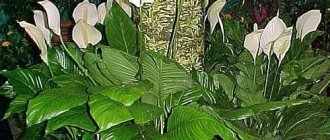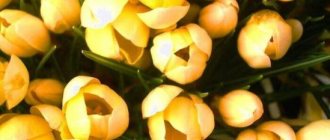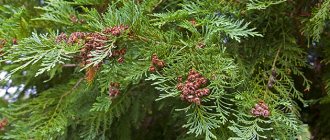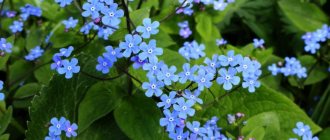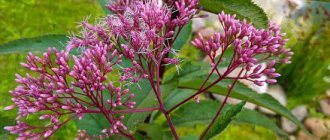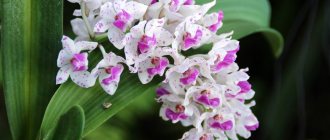A bright and beautiful decoration of the fields is the poppy flower - a wild representative of a huge family of plants. He is revered in many countries of the world, endowing him with various powers and energy. If desired, the plant can be grown on your own site, observing certain requirements.
Legends and origin story
There are many beautiful legends telling about the origin of a passionate flower with delicate velvet petals that can put you to sleep.
One of them says that when God created the earth, water, flora and fauna, everything turned out very beautiful. But under the cover of night these beauties were hidden. Night tried to open them for its hour with the help of the stars, but this attempt was unsuccessful. And then God decided to help the Night and created the Sleep and its dreams.
Over time, because of their cruelty, people began to have not only good dreams, but also terrible dreams and nightmares. Then Dream, in desperation, thrust his magic rod into the ground, plunging him into sleep. The rod came to life and turned into a poppy, without losing its ability to put one to sleep and cause visions. Since then, poppies have been considered dream-inducing plants.
According to another legend, the poppy is a symbol of earthly fertility and marriage due to its extreme fertility - its capsule contains up to 30 thousand small seeds that give life to new plants.
Many gods are depicted decorated with poppies. The goddess of earthly fertility, Persephone, is depicted wrapped in intertwined poppy flowers. The Greek god of dreams and reveries Hypnos (among the Romans - Morpheus) is depicted holding poppy heads in his hands or crowned with a wreath of these flowers. On the head of the God of Death Thanatos - a young man with black wings, wearing black clothes - also rests a wreath of poppy flowers. And this is not a complete list.
It is obvious that this seemingly simple flower is capable of making an impression. It entered the history and religion of different countries and many peoples due to its ability to induce sleep.
Poppy varieties with white and orange picotie colors
Gardeners' favorites are poppy varieties with picoti color.
Pikoti is a type of flower color when the petal has a main color (usually white) and a colored stripe along the edge with streaks along the petal (sometimes speckled). The first variety of decorative poppy of this type - white with an orange border, reinforced by the corrugation of the petals - turned out to be so impressive that it was named after the type of color - 'Picotee'. At least breeders and nurseries mentioned him exclusively with the epithets “charming”, “most attractive” and the like. I confirm – it looks absolutely amazing, including from a fairly long distance. Further selection efforts were aimed at expanding the orange stripe, which from a thin border in “Pikoti” became a wide ribbon in “Pinnacle” and occupies entire fields in “Flamenco”. Taking on a brighter red hue from the latter. The height of these three varieties is approximately the same, 70-75cm, on dry poor soils 50-55cm. Standing out against their background is the low - 40-45 cm - variety 'Place Pigalle', which, like the white 'Louvre', is part of the compact variety series 'Parisienne'.
General characteristics of the plant
Poppy is an annual, biennial or perennial herbaceous plant of the Poppy family with a developed stem or stemless. The height of the plant can reach 150 cm depending on the variety. Several dozen species belong to it. The most famous is the sleeping pill opium poppy.
The poppy root system is fragile, so the plant reacts very poorly to transplantation. But if you still need to replant it, then you need to wait until spring or the end of summer.
The leaves of the poppy plant are cut into one, two or several parts. They can be smooth, but usually have small terry or even hairs on them.
The plant attracts attention with its amazingly beautiful flowers, similar to a fire bowl with black coals in its middle. Large flowers with rich, delicate petals, bathed in dew, and countless stamens in the center, open with the first rays of the sun. Their petals are painted scarlet, snow-white, pinkish, golden and even black in all possible shades.
The fruit of the poppy plant is an oblong, ovoid capsule, in the middle of which small seeds ripen in huge quantities. When a ripe capsule ruptures, the seeds are scattered over considerable distances. Seeds can also spill out through openings in the box and be carried by the wind.
Gardeners also value this plant for its ease of cultivation and low maintenance requirements. With enough sunlight, poppy grows in any soil, even depleted soil.
Description of poppy flower
The Poppy family includes about 700 different species. The homeland is considered to be the territory of eastern Asia and western North America. It is worth understanding what a poppy flower looks like and what characteristics distinguish it.
- The height of the stems is from 45 to 150 cm. They are straight and strong.
- The leaves are dissected into several parts or whole, often covered with small terry hairs.
- The buds are large, the petals are whole.
- The root is taproot, penetrating deep into the ground.
- The fruit is a club-shaped capsule with seeds.
The structure of a poppy flower
Representatives of the family are characterized by the presence of bisexual flowers, which are often located singly. The plant's buds are large and bloom on long stalks. In order to understand why its seeds are collected in a box, it is worth understanding what a poppy flower is from the inside: it is endowed with a double perianth, the first falls off early, and the second consists of four petals. The poppy flower has many stamens with thin or expanded filaments at the top, which are collected around the stigma. After the bud fades, a seed box is formed.
What colors are poppies?
Thanks to the work of breeders, these plants can be found in unexpected shades. The poppy flower can be of the following colors:
- scarlet
; - flower poppy blue
; - lilac
; - snow-white
; - yellow
; - red and white
; - pink
; - red-orange
; - black
; - red with white border
.
Annual species
One of the easiest plants to grow and care for is annual poppies. They have one highlight - a fragrant aroma.
Opium poppy
One of the most common types of annual poppies among gardeners is the sleeping pill, also known as the opium poppy (Papaver somniferun). The plant grows up to 140 cm. Its leaves are grayish-green in color, have a bluish tint and are covered with a waxy coating. Large flowers of simple or goblet shape grow up to 16 cm in diameter. Their petals are ordinary, but there are also varieties with carved edges of the petals.
The opium poppy blooms in mid-summer with scarlet, snow-white, pinkish, bright purple or even black flowers, and the color of the petals can be either monochromatic or multi-colored. An important fact: the varieties used in ornamental gardening do not contain prohibited substances in their chemical composition.
There is a double variety of this plant species - the peony poppy (Papaver somniferum paeony). Its flowers are spherical in shape with a diameter of up to 15 cm.
Among the most worthy varieties of sleeping pills, or opium poppy, are:
- Danish flag - the variety is distinguished by large fringed inflorescences of a specific color - in its center on a bright red background a cross-shaped pattern of white, cream or pale yellow is visible;
- Merry Family - the variety is distinguished by a unique seed capsule, its appearance reminiscent of a hen with chickens;
- White clouds - a variety with gorgeous double inflorescences of snow-white color;
- Yellow clouds - a variety with spectacular double flowers of a golden hue;
- The Black Clouds variety has very dark purple petals. The inflorescences are large, double;
- the Cardinal variety has double flowers of bright red color with a diameter of up to 9 cm;
- The Tsartroza variety grows as a branched bush up to 90 cm in height. Double flowers, up to 10 cm in diameter, delicate light pink with a white spot at the base of the petals;
- The Zverg Rosenrot variety grows as a bush up to 60 cm in height. Its large double reddish-pink petals with a snow-white spot at the base have an unusual oval shape. The petals inside the inflorescence are fringed.
Oriental poppies with pink petals
Popular varieties of pink poppies
The very first pink (and generally the first non-scarlet) poppy was the variety “Mrs. Perry”, obtained by the originator Amos Perry in 1906 and named after his wife. The variety is popular to this day, including due to the beautiful corrugation of the petals. The shade is salmon pink. The 'Double Pleasure' variety has a purer, fuchsia-pink color, a flower with an increased number of petals (two-row). The height of the peduncles is about 60cm. Two soft pink compact poppies with bright dark spots at the base of the petals - 'Kleine Tanzerin' and 'Little Dancing Girl'. In my opinion, these are twin varieties (like phloxes Laura and Success), especially since they have the same name - “Little Dancer”. During the landing, no differences could be detected, although some sources claim the opposite. If you want “the same, but with mother-of-pearl buttons” (with) without black spots, the pale pink variety 'Karine' will suit you.
Perennial species
Some types of poppies are distinguished by their extraordinary vitality, and, one might say, are ineradicable, thanks to the ability to throw out shoots from pieces of roots remaining in the soil after weeding. These are perennial poppies; their most obvious representatives are the rock poppy and the Atlantic poppy, which are similar to each other. The oriental poppy, a perennial poppy species with exceptional decorative properties, has gained great popularity.
poppy
Most gardeners are unfamiliar with poppy (Papaver rupifragum), also called Spanish poppy. This is a low plant with a chic rosette of silver-colored leaves located in the root zone, which in themselves look very elegant and rich. Its semi-double flowers have satiny petals in a unique orange hue. It blooms profusely throughout the summer with small flowers no more than 2.5 cm in diameter.
Among the interesting varieties of poppy, one can highlight the variety Tangerite Parfait with semi-double inflorescences that appear continuously, one after another, throughout the summer period, subject to constant timely plucking of dried flowers. Particularly vigorous flowering occurs in early summer.
Eastern view
The largest representative of perennial poppies is the most beloved species among flower fans - the oriental or Turkish poppy (Papaver orientale). The plant is tall, can reach 120 cm. This poppy has elegant pinnately dissected elongated, hard leaves and stems, densely covered with hairs. The inflorescences are bright, usually with a black center, of a wide variety of colors, and can reach from 10 to 20 cm in diameter. The blue-black stamens inside the flower look very beautiful.
There are garden varieties with double and semi-double flowers. The period when poppies of this species bloom is limited to only 12-15 days from late May to early June.
Among the interesting varieties of oriental poppy are:
- Beauty Queen - a variety with satin saucer-shaped inflorescences;
- Black and White - this variety is distinguished by snow-white flowers. Their corrugated petals are very delicate, with a dark spot visible at their base;
- Blue Moon variety grows up to 100 cm in height. Very large flowers up to 25 cm in diameter are evenly colored in bright shades of pink with a blue tint;
- The Cedric Morris variety blooms with the largest flowers in pink tones. The petals are wavy. There is a dark spot at their base;
- the Kerlilock variety grows up to 70 cm. Unusual, slightly sloping flowers have a bright apricot color. At the base of their petals there is a black spot. The edge of the petals is serrated;
- the Allegro variety grows only up to 40 cm. The plant is notable for the fact that it begins to bloom already in the year of sowing. Its flowers are large in size and amazingly beautiful.
Flower growers also love the varieties Garden Glory, Mrs. Perry, Caryn, Pettis Plum and many other varieties.
Such types of perennial poppy as Alpine, Amur, white-pink, Scandinavian and a number of other charmingly beautiful, although less decorative varieties, compared to oriental poppy, are also cultivated.
Poppy varieties with lilac, lilac and violet flowers
Breeding purple poppies turned out to be difficult - but achievable
After the appearance of pink poppy varieties, it was logical to expect purple and plum ones. The prize of popularity in this group goes to 'Manhatten' (“Manhattan” from the “New York” variety series) with magnificent purple flowers. The petals have a pronounced longitudinal corrugation, so strong that a simple flower seems semi-double. A darker, almost purple variety with a telling name - 'Patty's Plum' really has crinkled petals the color of a ripe plum. This is one of the tallest varieties - flower stalks reach 80 cm versus 50 for “Manhattan”.
Care and reproduction
It is known that to extend the flowering period of poppies, it is necessary to promptly remove faded shoots. But, since poppy is propagated by seeds, to harvest seeds of the varieties you like, several of these shoots must be left until the seed pods are completely ripe. Provided that the bolls remain on the stem, the plant will self-sow abundantly.
Sow seeds mixed with sifted sand before winter or early spring directly into the soil. It is important to choose a sunny area for sowing, since poppy flowers lose their brightness in shaded areas. After the emergence of seedlings, they must be thinned out, leaving 10-20 cm between plants.
The propagation method by seeds for perennial poppy species is slightly different from the propagation method for annual poppy species. Seeds are sown for seedlings in special boxes immediately after they are collected, and with the appearance of 1-2 true leaves, they are planted in special peat pots, which are subsequently dug into the ground.
Growing poppies from seeds
Annual poppy is not grown through seedlings, as it produces good seedlings when sown in open soil. In addition, if you grow such a plant through seedlings, there is a high probability that it will die after transplantation. Perennial poppy can be grown in seedlings. After the first pair of true leaf blades appear on the seedlings, they should be planted to a permanent place in open ground.
When to plant poppy
If the seeds of such a flower were purchased on the Internet, a special store or in a garden pavilion, then most often they do not need pre-sowing preparation. Seeds collected with your own hands must first be stratified; for this, in regions with relatively warm winters, they are sown in the soil in the autumn or in the last weeks of winter, and it is necessary that the seeds be able to freeze in the cold soil. If you intend to sow poppy seeds in late spring, the seeds will have to be stratified first; to do this, they are placed on the refrigerator shelf intended for vegetables for 8 weeks. If the seeds are not subjected to stratification, then the seedlings will appear much later, and their development will be slow.
How to plant poppies in the garden
Almost all types and varieties of this flower grow well in well-lit areas. Regarding soil, all types and varieties have their own special preferences. The variety, which grows well in poor soil, does not require preliminary preparation of the site before planting. If the plant needs nutritious soil, then you should dig up the area and add compost or bone meal. To simplify sowing, it is recommended to combine the seeds with fine sand in a ratio of 1:10. Loosen the soil in the area to a depth of three centimeters, then evenly distribute the seeds over the surface, which should be sprinkled on top with a thin layer of soil. This plant is not sown in rows because they will not be able to stay in the place where you put them. Make sure that the soil in the area with crops is always slightly moist. After the seedlings appear, they need to be thinned, and a distance of 15–20 centimeters should be maintained between the plants. If sowing was carried out in spring, then the first seedlings should appear within 1–1.5 weeks. The poppy will bloom 3–3.5 months from the date of sowing, the flowering duration is 1–1.5 months.
POPPY. PLANTING A POPPY IN A FLOWER BED
Useful and harmful properties
The medicinal properties of the unique poppy plant have been known since ancient times. Poppy seeds normalize the digestive system and relieve dysentery and diarrhea. Using them, you can get rid of insomnia and eliminate some diseases of the upper respiratory tract. Poppy is also widely used in the treatment of cancer.
The harm of poppy is due to its unreasonable use by the person himself. This magical flower serves as the basis for the production of opiates, the excessive use of which leads to drug addiction, destroying the human psyche and bringing terrible suffering to the addict.
Poppy seeds are widely used in cooking as additives in baked goods and a wide variety of sweets and cookies. At the same time, the beneficial properties of poppy seeds are completely preserved provided that they are properly collected and dried without any trace of narcotic substances in them.
The leaves, roots and stems of the plant are used only in medicine . They are not eaten.
Application
- The taste of poppy seeds is used in cooking. It is added to sauces, sprinkled on baked goods and confectionery products, increasing the nutritional value of products. Poppy oil is also used in cooking.
- In medicine, poppy is used as a sleeping pill; it contains morphine, codeine, and papaverine. Morphine has analgesic properties. Codeine calms severe coughs. Papaverine relieves spasms of arteries, muscles, and bronchi.
- In folk medicine, self-seeding is used, infusions and decoctions are made, and diarrhea, dysentery, and bladder diseases are treated.
- Milk of the poppy is used by supporters of proper nutrition and vegetarians.
- Essential oils are used in cosmetology. Due to the presence of stearic, oleic, linoleic acids, vitamin E, codeine, morphine and papaverine, the oils are ideal for the production of cosmetic anti-aging and moisturizing products.
Distribution and ecology [ edit | edit code ]
Poppy is found in temperate, subtropical and less common cold zones.
Most poppies grow in dry places - steppes, semi-deserts, deserts, dry rocky mountain slopes.
There are about 75 species in Russia and neighboring countries, mainly in the Caucasus and Central Asia.
The most common species are the self-seeded poppy ( Papaver rhoeas
L.), growing as a weed in fields and along roads, Oriental poppy (
Papaver orientale
L.) - in the forest and subalpine zones of the mountains of the southern part of Transcaucasia, Hollow-stemmed poppy (
Papaver nudicaule
L.) - in the steppes of Altai, Eastern Siberia and Central Asia .
Poppies with fringe
Not only the color, but also the shape of the petal - fringed poppies are the most unusual of all.
Exquisite varieties of poppies with fringed petals are in high demand, and deservedly so. It is difficult to convey in words the impression of these shaggy and at the same time graceful flowers. The best fringed red variety is the aforementioned 'Turkenlouis'. Among white fringed poppies, nurseries offer varieties 'Miss Piggy' and 'White Ruffles', pink ones - 'Pink Ruffles', 'Ruffled Party' and 'Fancy Feathers'. It is noteworthy that all pink fringed poppies are tall, 70-80cm ('Fancy Feathers' - 60cm). White varieties, on the contrary, are compact - 40-45 cm.
In landscape design
Decorative varieties of poppies are successfully used in landscape design. If you choose the right combination of plants and their size, you will get unusually beautiful flower beds and rock gardens.
Papavers perfectly shade neighboring plants, but they themselves do not remain in the shade; they can be used in excellent flower tandems.
Varieties with a compact bush size are recommended to be grown along flower beds as a border.
They will look great in the foreground of alpine slides and rock gardens.
Bushes of medium height or high, reaching 1 m, are recommended to be placed in large landscape compositions; they are also planted as a monoplant, creating bright islands on the site.
Cultivation in open ground
Growing papaver is not at all difficult. This is an unpretentious crop with simple rules of agricultural technology:
- Watering is regular and moderate. During the spring-autumn period, moisturizing is carried out once every 10 days. The water should be settled and soft. In case of prolonged drought, watering must be increased.
- Mulching - carried out after each watering. Dry grass can be used as mulch.
- Fertilizer is optional. If you add supplements, use organic matter throughout the season, with an interval of 2-4 weeks.
- It is mandatory to loosen the soil after watering to ensure access of oxygen to the roots, and timely removal of weeds.
- Shelter for the winter is not required as such. In case of a frosty and snowless winter, you can cover the bushes with leaves or spruce branches.
In the fall, when the plant fades, the perennial bush must be trimmed, leaving a few centimeters above the ground. Annual plants are completely dug up.
Despite the simplicity of agrotechnical measures, only their careful compliance will ensure lush and long-lasting flowering
Timing of sowing in open ground
Papaver planting is carried out in the spring, in February - early March or in the fall, before winter.
Before sowing poppies in open ground in the fall, you need to make sure that the ground has cooled. If papaver is planted in autumn when the ground has not yet cooled down, this is fraught with premature germination of seedlings that will die when the first cold weather sets in.
Before the seeds are planted in the spring, they must be subjected to stratification - hardening, keeping them for several months at a temperature of +3 ° C to +6 ° C.
Recommended neighbor plants
What to plant poppies with to create a beautiful flower bed - recommended neighboring plants for papaver:
- viola;
- cornflower;
- carnation;
- decorative onion;
- iris;
- aquilegia;
- bell.
When planting papavers next to other plants, you need to take into account that the “neighbors” should not block the papaver’s sunlight. If there is insufficient lighting, the plant will not bloom.
With a lack of sunlight, problems with flowering may occur.
What are “supermacs”? 'Super Poppie Series'
Usually, everything with the word “super” arouses suspicion and thoughts of exaggeration and advertising ploys. But despite everything, the 'Super Poppie Series' is real and reflects the heroic efforts of breeders to eliminate the main drawback of all ornamental Papaver orientale varieties, namely short flowering. “Super poppies” hold one flower for up to 18 days, and the entire flowering lasts a month, which is incredibly long by the standards of old varieties. These are tall varieties with very large flowers of clear color, resistant to sun and rain. The best of the super series are the varieties 'Snow Goose' with extra-large and extra-white frilled semi-double flowers and 'Heartbeat' - the fruit of 30 years of effort with chocolate-red frilled flowers, a champion in flowering time.
Diseases and pests: treatment methods
The plant can often be accompanied by various diseases:
- root rot;
- powdery mildew;
- black spot fungus.
Much less often, terry poppy can become the target of attack by insect pests such as:
- aphid;
- spider mite
Sometimes, if unwanted insects are detected, it is enough to treat the bush several times with a soap solution. For more severe damage, various insecticides are used to control garden pests.
Having discovered signs of plant disease, the affected parts of the bush are cut off and burned. Leaving stems or leaves with obvious signs of the disease in the garden is dangerous; the disease can spread to other plants. To prevent and prevent the spread of the disease, the bush is treated with copper sulfate, Bordeaux mixture, and fungicides.
Care, soil, watering
As for care, the most important thing here is nutritious garden soil, rich in minerals. The place should be sunny; in the shade the plant withers and does not bloom. Watering is not required, as poppies prefer to grow on dry, stony or rocky soils with good drainage.
After the decorative poppy has faded, you can cut off the peduncle, perhaps if there is no sharp cold snap and with enough light the poppy will bloom again. Please note that if you are growing an annual of an exclusive variety, you must maintain isolation from other types of poppy, since after self-sowing the plant will not have the same characteristics.
Which family does it belong to?
Poppy belongs to the Poppy family of the same name – Papaveraceae. Papavers (from Latin Papaver - poppy) are the closest relatives of buttercups. The poppy family includes both annual and perennial plants. Among the most famous representatives of Poppy species are corydalis, celandine, and eschscholzia. There are about 700 species in total.
Decorative poppy
Briefly about the history of appearance
According to scientists, poppy is a plant known to mankind back in the Neolithic period (X-III millennium BC). Poppy seeds are found during excavations of sites of ancient people and in Egyptian pyramids.
There are many legends about poppy and its origin. According to ancient Roman mythology, poppies grew where the tears of the goddess Venus, who lost her lover, the beautiful Adonis, fell to the ground. Not only among the Greeks, but also among other peoples, poppies are flowers of love and passion.
According to Greek myth, these flowers were created to comfort the goddess Demeter, who had lost her daughter. Having collected an armful of scarlet flowers, the inconsolable mother plunged into oblivion.
Interesting! Ukrainian legends say that this red flower grows where Cossack blood was spilled on the ground. For many peoples, red poppies are also a symbol of fallen warriors.
Plant characteristics
In nature, poppies are common in temperate and subtropical climate zones. Their favorite places to grow are rocky mountain slopes, steppes and semi-deserts. In Russia, it is found in the Rostov region and Krasnodar region, in the Caucasus, Stavropol region, Altai, as well as in Central Asia and Eastern Siberia. Most often you can find the holostem and eastern varieties, as well as the self-sowing plant.
Wild poppies
For your information! Among the variety of papavers, there are both annual species and perennials.
So, what does a poppy look like? The flowers of this plant are single, large and bright, on long peduncles and with numerous stamens. The leaf is always pinnately dissected, pubescent or smooth, depending on the subspecies. Poppy fruits are in the form of dense capsules with small seeds. These flowers are pollinated by bees, but some species have switched to self-pollination. When the capsule suddenly bursts, light seeds scatter in all directions and are carried further by the wind.
Benefits and harms
Poppy seeds have many beneficial properties:
- They contain calcium, zinc, copper, phosphorus, sulfur, iron, magnesium and manganese, which are so valuable for the human body.
- Helps against insomnia and depression (especially in combination with honey).
- Have a beneficial effect on the gastrointestinal tract. They are especially effective against diarrhea.
- Relieves coughing attacks.
- Slows down the development of cancer cells.
Poppy decoction easily relieves headaches and toothaches, but is quickly addictive. And in general, experts do not recommend self-medication; even folk remedies should be taken after consultation and under the supervision of a doctor.
Note! It is not advisable to consume poppy seeds for elderly people, children under 3 years of age, pregnant and lactating women, as well as alcoholics and patients with liver and lung diseases.
The main harm of papaver is that the powerful drug opium is obtained from its milky juice.

